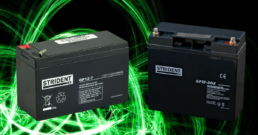A Guide to Purchasing Batteries in B2B: Key Considerations
In the business-to-business (B2B) landscape, purchasing batteries is not as simple as picking up a pack from a retail store. The requirements are typically more complex, with considerations ranging from the type of battery needed to the long-term implications of the purchase, including cost-effectiveness, sustainability, and compatibility. Whether you are sourcing batteries for industrial machinery, medical devices, or mobility scooters, making an informed decision is crucial to ensure operational efficiency, safety, and cost management. This article provides an in-depth look at the key factors businesses should consider before purchasing batteries for their business.
Understanding Battery Types and Technologies
 The first step in purchasing batteries is understanding the various types available and their specific applications. The most common battery types include:
The first step in purchasing batteries is understanding the various types available and their specific applications. The most common battery types include:
- Alkaline Batteries: These are widely used in low-drain devices such as remote controls and clocks. They are inexpensive but have a shorter lifespan compared to other types.
- Lithium-Ion (Li-Ion) Batteries: Known for their high energy density and rechargeability, these batteries are common in electronics, electric vehicles, and portable medical devices. They offer a longer lifespan and better performance but are also more expensive.
- Lead-Acid Batteries: Primarily used in automotive, backup power, and industrial applications, these batteries are durable and can provide high surge currents. However, they are heavy and contain hazardous materials.
- Nickel-Cadmium (NiCd) and Nickel-Metal Hydride (NiMH) Batteries: These are often used in power tools and emergency lighting. NiMH batteries offer a higher energy density compared to NiCd but may have a shorter life cycle in certain applications.
Understanding the specific requirements of your business, such as the device’s power needs, operating conditions, and expected battery life, will help you choose the right type of battery.
Evaluating Capacity and Performance
Battery performance and capacity are critical. The capacity of a battery, measured in ampere-hours (Ah) or watt-hours (Wh), determines how long the battery can power a device. For high-drain devices, like industrial machinery or medical equipment, a higher-capacity battery is essential to ensure uninterrupted operation.
 Additionally, consider the battery’s discharge rate, which indicates how quickly the battery can deliver power. High-discharge batteries are necessary for applications requiring bursts of energy, such as in power tools or uninterruptible power supplies (UPS).
Additionally, consider the battery’s discharge rate, which indicates how quickly the battery can deliver power. High-discharge batteries are necessary for applications requiring bursts of energy, such as in power tools or uninterruptible power supplies (UPS).
It’s also important to evaluate the battery’s performance under varying temperatures. Some batteries, like Li-Ion, perform poorly in extreme cold or heat, which can be a significant factor in industries like logistics or outdoor services where equipment may be exposed to harsh environments.
Lastly, a consideration to think about does the distributor provide information on proper battery care. Check out our Battery Care Guide.
Cost Considerations and Total Cost of Ownership (TCO)
While the upfront cost of a battery is an important consideration, it’s equally crucial to evaluate the Total Cost of Ownership (TCO). TCO includes not just the purchase price but also the long-term costs associated with maintenance, replacement, and disposal.
For instance, while Li-Ion batteries are more expensive initially, their longer lifespan and lower maintenance requirements can make them more cost-effective over time compared to cheaper alternatives like alkaline batteries, which may need to be replaced more frequently.
Businesses should also consider bulk purchasing and long-term contracts, which can often provide cost savings. However, it’s essential to balance the cost with the need to avoid stockpiling batteries that may degrade over time.
Supplier Reliability and Support
Choosing a reliable supplier is crucial in the B2B battery purchasing process. A reputable supplier not only provides quality products but also offers support services such as technical advice, warranty options, and after-sales service. This can be particularly important for businesses that rely on custom battery solutions or have specific technical requirements.
Evaluate the supplier’s track record, customer reviews, and the range of products they offer. It’s also wise to assess their ability to meet your future needs, including the availability of newer battery technologies and scalability options.
Additionally, consider the supplier’s delivery capabilities. In industries where downtime can lead to significant losses, timely delivery of batteries is critical. A supplier with a strong logistics network can ensure that your business operations are not disrupted due to battery shortages.
Sustainability and Environmental Impact
As businesses increasingly focus on sustainability, the environmental impact of battery purchasing is a key consideration. Batteries contain materials like lead, cadmium, and lithium, which can be harmful to the environment if not disposed of properly.

Look for suppliers who offer recycling programs or who use environmentally friendly materials in their batteries. Some companies also offer batteries with a longer lifespan, which reduces the frequency of replacements and the associated environmental impact.
In addition, consider the energy efficiency of the batteries. More efficient batteries can reduce the overall energy consumption of your devices, contributing to your company’s sustainability goals.
Compliance and Safety Standards
Safety is a paramount concern when purchasing batteries and chargers, particularly for applications in critical industries like healthcare or manufacturing. Ensure that the batteries you purchase comply with industry standards and regulations.
It’s also important to consider the battery and chargers safety features, such as overcharge protection, thermal cutoff, and short-circuit protection. Batteries (Particularly Lithium) and chargers without these features can pose significant risks, including fires or explosions, especially in high-drain or hazardous environments particularly within Lithium batteries.
Custom Solutions and Scalability
For businesses with unique needs, off-the-shelf batteries may not always be suitable. In such cases, custom battery solutions might be necessary. A custom battery can be designed to meet specific voltage, capacity, and form factor requirements.
When choosing a supplier, evaluate their ability to provide customised solutions and their expertise in designing and manufacturing custom batteries. This is particularly important for industries where specialized equipment is used, and standard batteries do not suffice.
Moreover, consider the scalability of the battery solution. As your business grows, your energy needs may change. Partnering with a supplier who can scale production or provide upgraded battery technologies can be crucial for long-term success.
Future-Proofing Your Battery Purchases
The battery industry is constantly evolving, with new technologies emerging that offer better performance, longer life, and reduced environmental impact. When purchasing batteries, consider the future compatibility of your battery choices with upcoming technologies.
For instance, solid-state batteries, which are currently in development, promise to offer higher energy density and improved safety compared to conventional Li-Ion batteries. While these technologies may not be available immediately, keeping an eye on industry trends can help you make informed decisions that future-proof your battery investments.
Purchasing batteries requires careful consideration of multiple factors, from understanding the specific battery technologies to evaluating the long-term cost implications and ensuring compliance with safety standards. By considering these key aspects, businesses can make informed decisions that not only meet their current needs but also support their long-term operational and sustainability goals.
Whether you’re sourcing batteries for industrial equipment, medical devices, or mobility devices, the right choice can enhance efficiency, reduce costs, and ensure the safety and reliability of your operations.
A Comprehensive Guide to UPS Batteries
A Complete Guide to UPS Batteries
In an era where technology plays a critical role in every aspect of life, ensuring a continuous power supply is paramount. Uninterrupted Power Supply (UPS) systems have become indispensable for safeguarding sensitive electronics, maintaining operational continuity, and protecting data integrity. Strident Innovations, a leader in battery technology, offers advanced battery solutions that complement UPS systems, providing reliable and efficient power backup.
This comprehensive guide will explore the intricacies of UPS systems, their types, functionalities, applications, and how Strident Batteries leads the way for uninterrupted power supply for all your needs.
Understanding Uninterrupted Power Supply (UPS)
What is UPS?

A UPS is an electrical apparatus that provides emergency power to a load when the input power source, typically the mains power, fails. A UPS differs from an auxiliary or emergency power system or standby generator in that it provides near-instantaneous protection from input power interruptions by supplying energy stored in batteries, supercapacitors, or flywheels.
Types of UPS Systems
- Standby UPS (Offline UPS)
- Operation: Normally, the load is powered directly by the primary power source. When a power failure occurs, the UPS switches to battery power.
- Applications: Personal computers, home office equipment.
- Line-Interactive UPS
- Operation: Similar to Standby UPS but with an automatic voltage regulator (AVR) to handle minor power fluctuations without switching to battery.
- Applications: Small business servers, network equipment.
- Online UPS (Double-Conversion UPS)
- Operation: Converts incoming AC power to DC, and then back to AC to ensure a consistent, clean, and stable power output.
- Applications: Data centers, industrial equipment, critical applications.
- Rectifier/Charger Function:
The rectifier/charger in a UPS system is responsible for converting the incoming AC (alternating current) power from the mains into DC (direct current) power. This DC power is used to charge the UPS’s battery or batteries, ensuring they are ready to supply power when needed.
Detailed Explanation:
- Conversion Process: The rectifier utilises semiconductor diodes and transistors to convert AC to DC. This involves rectifying the AC waveform into a pulsating DC signal and then filtering it to produce a stable DC voltage.
- Charging Management: Modern rectifiers are equipped with sophisticated charging algorithms to ensure the batteries are charged optimally. This includes managing charge rates and monitoring battery health to extend battery life.
- Voltage Regulation: Besides charging the batteries, the rectifier also helps regulate the input voltage, ensuring a consistent and stable output that is free from fluctuations and surges.
- Battery Function:
The battery is the heart of the UPS system, storing electrical energy that can be used during a power outage. It ensures that there is a reserve of power available to keep connected devices running without interruption.
Detailed Explanation:
- Energy Storage: Batteries in a UPS system can be of various types, including sealed lead-acid (SLA), lithium-ion, or nickel-cadmium (NiCd). Each type has its own advantages in terms of capacity, lifespan, and maintenance requirements.
- Capacity: The capacity of a UPS battery is measured in ampere-hours (Ah) or watt-hours (Wh), indicating how long the UPS can supply power to the connected load during an outage.
- Maintenance: While some batteries, like SLA, require minimal maintenance, others might need regular checks. Battery management systems (BMS) are often integrated to monitor the state of charge (SoC), state of health (SoH), and to manage charging and discharging cycles efficiently.
- Inverter Function:
The inverter in a UPS system converts the stored DC power from the battery back into AC power, which is used to run the connected devices during a power outage.
Detailed Explanation:
- Conversion Process: The inverter uses electronic switches (transistors, MOSFETs) to convert DC back to AC. This involves creating a sine wave output that matches the characteristics of the input AC power (voltage, frequency).
- Efficiency: Modern inverters are highly efficient, often exceeding 90% efficiency, meaning minimal energy is lost during the conversion process.
- Pure Sine Wave Output: High-quality inverters produce a pure sine wave output, which is essential for the proper functioning of sensitive electronic equipment. Inverters that produce a modified sine wave may be less expensive but can cause issues with certain devices.
- Transfer Switch Function:
The transfer switch is a critical component that automatically switches the power source from the mains to the battery when it detects an interruption or failure in the primary power supply.
Detailed Explanation:
- Automatic Operation: The switch operates almost instantaneously (typically within milliseconds) to ensure there is no noticeable interruption in power to the connected devices.
- Dual Function: In addition to switching to battery power during outages, the transfer switch also reverts to mains power once it is restored, ensuring the battery starts recharging.
- Safety and Reliability: High-quality transfer switches are designed to handle high loads and ensure reliable operation over many cycles. They often include features such as overload protection and manual override capabilities.
- Display/Control Panel
Function:
The display/control panel allows users to monitor the status of the UPS system and manage its operation. It provides critical information and alerts regarding power status, battery health, load levels, and system faults.
Detailed Explanation:
- User Interface: Modern UPS systems feature intuitive LCD or LED displays that show real-time data, such as input/output voltage, battery charge level, load percentage, and runtime remaining.
- Alarms and Alerts: The control panel provides audible and visual alarms for various conditions, such as battery low, overload, and system faults, enabling prompt corrective actions.
- Management and Settings: Users can configure the UPS settings through the control panel, including setting the sensitivity to voltage fluctuations, adjusting the alarm parameters, and initiating self-tests to ensure the system is functioning correctly.
Benefits of UPS Systems
- Power Continuity:
Power continuity is the primary benefit of a UPS system. It ensures that critical equipment and systems remain operational during power outages, preventing interruptions that can disrupt business operations and lead to significant financial losses.
- Business Continuity: For businesses, maintaining power continuity is crucial for operations such as data centers, financial institutions, healthcare facilities, and manufacturing processes. A UPS system ensures that these operations do not come to a halt, preserving productivity and revenue.
- Critical Applications: In environments like hospitals, uninterrupted power is essential for life-support systems and other critical medical equipment. A UPS ensures these devices function without interruption, safeguarding patient lives.
 2.Data Protection: UPS systems protect against data loss and corruption by providing a stable power supply during outages and allowing for the proper shutdown of systems.
2.Data Protection: UPS systems protect against data loss and corruption by providing a stable power supply during outages and allowing for the proper shutdown of systems.
- Preventing Data Loss: Power outages can cause unsaved data to be lost. A UPS gives users the time to save their work and shut down systems properly.
- Corruption Prevention: Sudden power loss can corrupt data files and damage the integrity of databases. A UPS ensures that data integrity is maintained, preventing corruption.
- Backup Systems: For servers and network equipment, UPS systems maintain power to backup systems and processes, ensuring that data backups are completed without interruption.
- Equipment Protection: UPS systems provide a buffer against power surges, spikes, and other electrical anomalies that can damage sensitive electronic equipment.
- Surge Protection: Sudden spikes in power can damage delicate electronic circuits. A UPS system absorbs these surges, preventing them from reaching connected devices.
- Voltage Regulation: Fluctuations in voltage can cause equipment malfunctions. UPS systems regulate voltage levels, providing a stable power supply to connected devices.
- Longevity of Equipment: By protecting against electrical anomalies, a UPS extends the lifespan of electronic equipment, reducing the need for frequent repairs or replacements.
- Operational Efficiency: UPS systems contribute to overall operational efficiency by minimising downtime and maintaining productivity during power disturbances.
- Minimised Downtime: With a UPS in place, businesses experience fewer interruptions, leading to sustained productivity and operational efficiency.
- Cost Savings: Reduced downtime translates to cost savings by avoiding the expenses associated with halted operations, data recovery, and equipment repairs.
- Smooth Transitions: UPS systems ensure smooth transitions between power sources, avoiding the abrupt stops and starts that can disrupt workflows and processes.
How Strident Batteries Enhance UPS Systems
Strident Innovations has developed a range of advanced batteries that are specifically designed to meet the rigorous demands of UPS systems. Here’s how Strident Batteries compliment and enhance the functionality of UPS systems:
Advanced Battery Technology
- Lithium-Ion Batteries
- Advantages: High energy density, longer lifespan, lighter weight, and faster charging times.
- Applications: High-performance UPS systems for data centers and critical infrastructure.
- Sealed Lead Acid (SLA) Batteries
- Advantages: Cost-effective, reliable, and widely used.
- Applications: Standard UPS systems for office and home use.
Key Features of Strident Batteries
- High Energy Density: Provides more power in a smaller footprint, crucial for space-constrained environments.
- Long Cycle Life: Ensures longevity and reduces the frequency of battery replacements.
- Fast Recharge Capability: Minimises downtime and ensures quick recovery after power outages.
- Wide Temperature Range: Operates efficiently in diverse environmental conditions.
- Maintenance-Free Operation: Reduces the need for frequent checks and maintenance.
Integration with UPS Systems
Strident Batteries are designed for seamless integration with various types of UPS systems. Their compatibility and reliability ensure that the UPS systems can perform optimally, providing uninterrupted power and protection for critical applications.
- Data Centres
- Challenge: High energy demand and the need for reliable power backup.
- Solution: Strident’s batteries provide high energy density and long lifespan, ensuring continuous operation and data integrity.
- Healthcare Facilities
- Challenge: Ensuring the continuous operation of life-saving equipment during power outages.
- Solution: Strident SLA batteries offer reliable and maintenance-free power backup, ensuring patient safety and operational continuity.
- Industrial Applications
- Challenge: Powering critical industrial equipment with high energy consumption.
- Solution: Strident batteries provide robust and efficient power backup, minimising downtime and maintaining productivity.
Selecting the Right UPS System with Strident Batteries
 Assessing Power Needs
Assessing Power Needs
- Load Calculation: Determine the total power requirement of all devices to be connected to the UPS.
- Runtime Requirement: Calculate the duration for which backup power is needed during an outage.
Choosing the UPS Type
- Standby UPS: Suitable for low power and short duration requirements.
- Line-Interactive UPS: Ideal for environments with frequent power fluctuations.
- Online UPS: Best for critical applications requiring continuous and clean power.
Battery Selection
- Capacity and Runtime: Ensure the battery can provide sufficient power for the desired runtime.
- Compatibility: Verify that the battery is compatible with the selected UPS system.
- Environment: Consider the operating conditions and select a battery that performs well in those conditions.
Installation and Maintenance
- Professional Installation: Ensure the UPS and batteries are installed by qualified professionals.
- Regular Maintenance: Schedule regular maintenance checks to ensure optimal performance and longevity of the UPS and batteries.
Future Trends in UPS Systems and Battery Technology
Emerging Technologies
- Smart UPS Systems: Integration with IoT for remote monitoring and management.
- Green Energy Solutions: Incorporation of renewable energy sources such as solar and wind power.
- Advanced Battery Technologies: Development of solid-state batteries and other innovations to enhance energy density and safety.
Sustainability and Energy Efficiency
- Eco-Friendly Batteries: Focus on developing batteries with lower environmental impact.
- Energy-Efficient UPS Systems: Design UPS systems that consume less power and generate less heat.
Uninterrupted Power Supply systems are vital for maintaining the continuous operation of critical equipment and protecting sensitive data from power disruptions. Strident play a crucial role in enhancing the performance and reliability of these systems. With advanced battery technology, high energy density, long cycle life, and seamless integration capabilities, Strident Innovations provides the perfect complement to UPS systems.
As the demand for reliable power solutions continues to grow, we are poised to lead the way with innovative battery technologies that meet the challenges of today and the future. Whether it’s for data centers, healthcare facilities, industrial applications, or home offices, we ensure that power is always available when it’s needed most.
AGM Batteries - A Complete Guide to Absorbed Glass Mat Battery
AGM Batteries – What Are They?
AGM batteries (Absorbent Glass Mat) represents a significant advancement in battery technology. Known for their reliability, efficiency, and durability, they have become the preferred choice for a wide range of applications. In this article, we will explore what AGM batteries are, how they work, their advantages, and their various applications, including their role in innovative products from Strident Innovations.
Understanding AGM Batteries
AGM batteries are a type of lead-acid battery that uses an absorbent glass mat to hold the electrolyte. Unlike traditional flooded lead-acid batteries, where the electrolyte freely flows around the plates, the electrolyte in these batteries is absorbed into a thin fiberglass mat and contained. Therefore, this design not only prevents spillage but also enhances safety. Additionally, by containing the electrolyte, these batteries reduce the risk of leaks and improve overall reliability
- Maintenance-Free Operation: AGM batteries are sealed and do not require the regular addition of water, making them virtually maintenance-free.
- Spill-Proof and Vibration Resistant: The absorbed electrolyte prevents spills and reduces the risk of acid leaks, making them a safer and more robust against vibrations and shocks.
- Higher Efficiency: Lower internal resistance, allowing for faster charging and better performance in high-drain applications.
- Longer Lifespan: Thanks to improved design and materials, these batteries tend to have a longer service life compared to traditional lead-acid batteries. However, there are additional steps you can take to further extend the lifespan of your battery. By incorporating these care practices, you can maximise the longevity and performance of your battery even more.
How AGM Batteries Work
The key to this type of batteries performance lies in its construction. The battery plates are tightly packed and immobilised in a sealed casing. The fiberglass mat absorbs the electrolyte and holds it in place, maintaining consistent contact with the battery plates. This design reduces the internal resistance and maximises the surface area in contact with the electrolyte, enhancing the battery’s efficiency and power output.
These batteries are capable of different uses:
- Providing high bursts of starting power which you will see within the automotive industry in car batteries.
- They can also be deeply discharged and recharged repeatedly without significant loss of capacity. Consequently, this durability is particularly advantageous in the mobility industry, where frequent cycling is common. These characteristics make them ideal for applications that require reliable, high-power output and durability
Advantages of AGM Batteries
AGM batteries offer several advantages over traditional flooded lead-acid batteries, making them a preferred choice for many applications:
- Sealed Design: The sealed design of AGM batteries eliminates the need for maintenance, such as adding water to the cells. This makes them more convenient and safer to use.
- Deep Cycle Capability: AGM batteries can be discharged to a greater extent without damaging the battery, which is ideal for applications that require long-duration power delivery.
- Faster Recharge: Due to their lower internal resistance, AGM batteries can be recharged more quickly than traditional lead-acid batteries, reducing downtime.
- Versatility: AGM batteries can be installed in various orientations without the risk of leaking, making them suitable for a wide range of installations.
- Enhanced Durability: The robust construction of AGM batteries makes them more resistant to shock and vibration, extending their lifespan in harsh conditions.
- Safety: The sealed design reduces the risk of acid spills and gas emissions, making AGM batteries safer for use in enclosed or poorly ventilated spaces.
Applications of AGM Batteries
Mobility Applications

These batteries are increasingly used in mobility applications, providing reliable power for electric wheelchairs, mobility scooters, and other personal mobility devices. Their long lifespan, maintenance-free design, and consistent power delivery make them ideal for these applications.
- Electric Wheelchairs: Electric wheelchairs (Both 3 and 4 wheeled) require reliable power sources to ensure the mobility and independence of users. AGM batteries provide the necessary power and are maintenance-free, which is crucial for users who may have limited ability to perform battery upkeep.
- Mobility Scooters: Similar to electric wheelchairs, mobility scooters benefit from the robust and reliable power provided by these batteries. These batteries ensure that users can travel long distances without worrying about power depletion.
- Personal Mobility Devices: Such as electric bikes and Segways. Their ability to provide consistent power and withstand frequent recharging cycles makes them suitable for these applications.
Industrial Applications
In industrial settings, these batteries are used in equipment like forklifts, pallet jacks, and other machinery that require reliable and robust power sources.
- Forklifts and Material Handling Equipment: these batteries power electric forklifts and pallet jacks, which are essential for efficient material handling in warehouses and factories. The batteries provide the necessary power to operate these machines for extended periods, ensuring smooth operations.
- Emergency Lighting: Industrial facilities often have emergency lighting systems. These systems ensure that emergency exits and pathways are illuminated during power outages, enhancing safety for workers.
- Construction Equipment: Construction sites often use various electrically powered tools and equipment. AGM batteries provide a reliable and portable power source for these applications, ensuring that work can continue smoothly even in areas without a stable power supply.
Medical Equipment

AGM batteries are used in medical devices and equipment where reliability and safety are paramount. Their sealed design and consistent power delivery ensure that critical medical equipment operates without interruption.
- Portable Medical Devices: Devices such as portable oxygen concentrators, ventilators, and infusion pumps rely on AGM batteries for uninterrupted power. Moreover, the maintenance-free nature of these batteries makes them particularly suitable for use in medical environments where reliability is crucial.
- Similarly, backup power for medical facilities is essential. Hospitals and clinics utilise UPS systems equipped with batteries to provide backup power for critical equipment during power outages. Consequently, this ensures that life-saving equipment remains operational even when the main power supply is disrupted.
Backup Power and UPS Systems
AGM batteries are an excellent choice for uninterruptible power supply (UPS) systems and backup power applications. Their high efficiency and reliability ensure that critical systems remain operational during power outages.
- Data Centers: In data centers, maintaining power during outages is crucial to prevent data loss and ensure continuous operation. Consequently, batteries in UPS systems deliver immediate backup power, allowing for a safe shutdown or continued operation until the main power is restored.
- Home and Office: Similarly, many homeowners and businesses rely on UPS systems to keep essential electronics, such as computers, routers, and security systems, operational during power outages. Thus, these batteries provide the reliability and maintenance-free operation needed for both home and office applications.
Automotive Applications
These batteries are widely used in modern vehicles, including cars, motorcycles, and RVs. Their ability to provide high starting power and withstand deep discharges makes them perfect for vehicles with high electrical demands, such as those with start-stop systems, electric accessories, and advanced infotainment systems.
- Cars: Modern automobiles with advanced electrical systems greatly benefit from AGM batteries. Specifically, these batteries deliver reliable power for both starting the engine and supporting electrical systems while the vehicle is idle. Moreover, start-stop systems, which enhance fuel efficiency by shutting off the engine during stops, rely on the quick start capability of AGM batteries. Consequently, AGM batteries are essential for ensuring optimal performance and efficiency in today’s vehicles.
- Motorcycles: The compact and robust nature of AGM batteries makes them ideal for motorcycles. They offer high cranking power needed to start the engine and are resilient to the vibrations and shocks typical in motorcycle use.
Marine and Recreational Vehicles
AGM batteries are popular in boats and recreational vehicles because of their spill-proof design and vibration resistance. Their robust construction ensures reliable power for starting engines and running electronics, even in harsh conditions.
- Boats: Marine applications demand batteries that can withstand the constant motion and potential exposure to harsh conditions. AGM batteries are ideal as they are sealed and spill-proof, reducing the risk of acid leaks. They power navigation systems, lighting, and other onboard electronics reliably.
- ATVs and Other Recreational Vehicles: All-terrain vehicles (ATVs) and similar recreational vehicles benefit from the vibration resistance and reliability of AGM batteries. These vehicles often operate in rugged environments where durability is crucial.
Renewable Energy Storage
AGM batteries store energy from peak production times and renewable energy systems. Their deep cycle capabilities and long lifespan make them highly suitable for these applications.
- Solar Power Systems: AGM Batteries ability to handle deep discharges ensures that stored energy is utilised efficiently.
- Wind Power Systems: Wind turbines produce energy that can be stored in AGM batteries.

Let’s explore some of the innovative products from Strident Innovation that utilise AGM batteries:
Mobility Power Solutions:
Strident Innovation offers a range of products designed to enhance mobility and independence for individuals with mobility challenges, incorporating AGM batteries to ensure reliable, high-performance power delivery.
-
- Example Product: Strident AGM GP12-50:
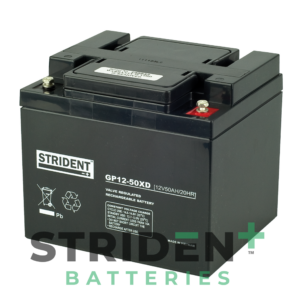
Engineered to elevate your mobility scooter experience to new heights of reliability and performance. With its durable construction and long-lasting charge, you can confidently navigate any terrain, from city streets to rugged outdoor terrain, ensuring your independence and freedom with every ride.
- Example Product: Strident AGM GP12-50:
Medical Power Solutions:
In the medical field, Strident Innovation’s power solutions incorporate AGM batteries to ensure that critical medical equipment operates without fail. The reliability of AGM batteries supports the healthcare industry’s stringent demands.
-
- Example Product: Strident AGM GP12-1.2:
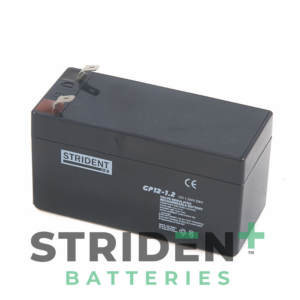
The pinnacle of reliability and performance in medical battery solutions. With cutting-edge technology and a robust design, our battery ensure uninterrupted power supply, safeguarding critical medical equipment and enhancing patient care with unparalleled efficiency and peace of mind.
- Example Product: Strident AGM GP12-1.2:
Industrial and Commercial Applications:
AGM batteries are used in industrial equipment where high power output and resilience are essential.
-
- Example Product: Strident AGM GP12-75:
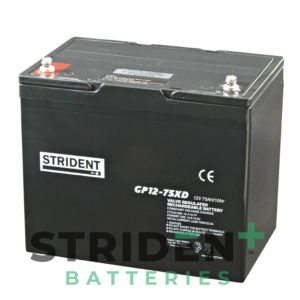
This heavy-duty battery solution designed for industrial applications. With its robust AGM construction, it can handle the high loads and frequent discharges typical of industrial equipment, ensuring reliable performance in demanding environments.
- Example Product: Strident AGM GP12-75:
Strident Innovation’s commitment to integrating AGM battery technology into their product lines has resulted in a range of advanced solutions across various sectors. From mobility devices enhancing independence to critical medical power solutions and robust industrial applications, AGM batteries provide reliability, performance, and maintenance-free operation needed in demanding environments.
By focusing on innovation and leveraging the benefits of AGM battery technology, Strident Innovation continues to develop products meeting evolving needs of customers, ensuring they remain at forefront of power solution advancements. As technology progresses, role of AGM batteries in these applications will only grow, driven by ongoing efforts of companies like Strident Innovation pushing boundaries of possibility. If you have any questions about our batteries or wish to partner with us with a trade account, do reach out to us below.
Battery Care Guide - How to Extend the Life of Your Battery
How to Maximise Battery Care for Enhanced Reliable Power
Proper battery care is crucial to maintain the optimal performance and lifespan of batteries. Strident Innovations is at the forefront of developing high-performance batteries. We ensure that users experience reliability and longevity in their battery. This guide will provide essential tips and best practices to help you get the most out of your Battery.
Understanding Your Battery
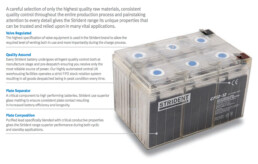
Strident batteries are designed with cutting-edge technology, offering superior power and durability. However, to keep these batteries functioning at their best, it’s important to understand their specific needs. Here are some key features of Strident batteries:
- Cyclic Performance: Strident AGM Batteries provide around 550-650 cycles dependant on how well the battery is managed, our Carbon Gels is around double this number.
- Deep Discharge Recovery: Allows for significant power recovery even after extensive use (Applies to our Carbon Gel Batteries)
- Enhanced Safety Features of our chargers: Built-in safeguards to prevent overcharging and overheating when charging your battery.
How To Install Your Battery
We advise getting your batteries and accessories installed by an authorised distributor as they have qualified technicians who have the correct tools and equipment for installation.
If your product has two or more batteries, always replace the full set of batteries. Never be tempted to replace just one and/or mix brands as this leads to premature failure and voids manufacturer’s warranty should an issue arise in the future.
After installation, be sure to fully charge batteries prior to first use.
Charging Your Battery

Proper charging practices are essential for maintaining battery care and health. Follow these steps to ensure your battery is charged correctly:
- Use the Correct Charger: Always use the charger provided by Strident Innovation with our batteries. Using an incompatible charger can damage the battery.
- Charge Regularly: For daily use, it’s best to charge your battery every night, even on low use days. Avoid letting the battery discharge completely before recharging.
- Monitor Charging Time: Do not overcharge your battery. Once it reaches full charge, disconnect it from the charger. Most chargers have an indicator light to signal when charging is complete.
- Use The Correct Charger Size: Your retailer should be able to advise what charger to use. As a rule of thumb you work on 10% of battery capacity (ie: 50Ah battery x 10% = 5 so you require a 5 amp charger).
- Replace Your Charger: It is our recommendation to replace the charger every 2 years as after 2 years of 8hr charging everyday, the electronics will reduce in output and therefore result in battery damage.
How Do Chargers Affect Battery Life
On occasions batteries will fail with percentages that are very close together (Less than 10%).
From our years of experience in the battery sector, this generally points towards a charging issue rather than manufacturer defect.
We have proven through our research, the charger can have significant effect on the battery life. We recommend the charger is changed every 18-24 months as the electronics in the charger deteriorate over time and finally impacts the correct current output for what the battery needs, therefore will not charge the battery correctly.
How to Store Your Battery
Proper storage is imperative for battery care. It can extend its life and maintain its performance. Follow these guidelines for safe storage:
- Cool, Dry Place: Store your battery in a cool, dry environment. Avoid areas with high humidity or extreme temperatures.
- Partially Charged for Long-Term Storage: If you plan to store the battery for an extended period ensure that it is fully charged and check once a month to recharge as needed.
- Regular Maintenance: Even when not in use, charge your battery every 3-6 months to maintain its health.
Troubleshooting Common Battery Issues
Occasionally, you might encounter issues with your battery. Here are some common problems and their solutions:
- Battery Not Charging: Check the connections between the battery and charger. Ensure the charger is plugged into a working outlet. If the problem persists, the charger or battery may need replacing.
- Short Battery Life: This could be due to old age, improper charging habits, or heavy usage. Review your charging practices and consider replacing the battery if it’s over 2-3 years old.
- Overheating: If the battery gets excessively hot during use or charging, stop using it immediately and contact customer support. Overheating can indicate a serious issue.
Recycling and Disposing Your Battery
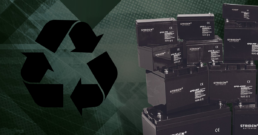
Proper disposal of your Strident Innovation battery is important for environmental safety. Do not throw old batteries in the trash. Follow these steps for disposal:
- Recycle with Strident: Get in touch with us your battery recycling needs.
- Find a Recycling Centre: Look for local battery recycling programs or centres. Many electronics stores also offer battery recycling services.
- Prepare the Battery: Before recycling, cover the battery terminals with tape to prevent short-circuiting.
- Follow Local Regulations: Adhere to local regulations regarding battery disposal to ensure environmental safety.
Caring for your battery properly will maximise its performance and longevity, ensuring your mobility device remains reliable and efficient. By following these guidelines on charging, storing, operating, and troubleshooting, you can make the most of your battery’s lifespan. Remember, a well-maintained battery not only enhances your mobility but also contributes to a more sustainable and eco-friendly environment. For any additional support or specific questions, consult Strident Innovation’s customer care team.
Upgrade your mobility experience with Strident batteries, designed to deliver unmatched performance and reliability. Whether you’re an end user looking for a dependable power source or a retailer seeking to provide your customers with top-tier mobility solutions, Strident Innovation batteries are the perfect choice. With advanced technology ensuring longer usage times, rapid recovery, and robust safety features, these batteries stand out in the market. Contact us today to learn more about how our batteries can enhance your mobility solutions.
Have any Questions? Get in touch.


